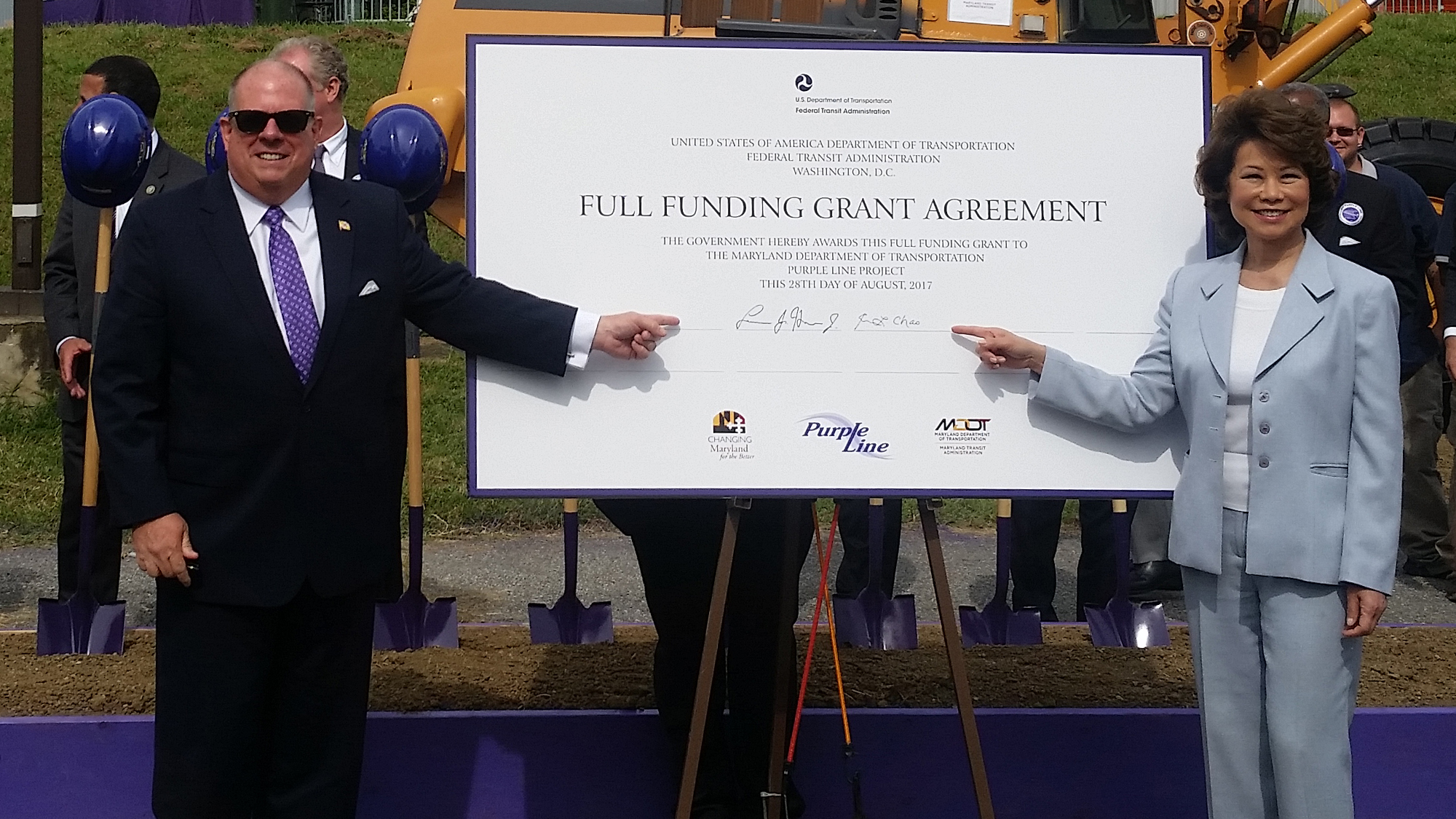Construction on the Purple Line officially began Monday, after Maryland Gov. Larry Hogan and U.S. Transportation Secretary Elaine Chao held a ceremonial signing and groundbreaking at the metro’s proposed operations center in Hyattsville.
The 16-mile light-rail transit system, which is set to run through the University of Maryland campus, will receive full federal funding that amounts to $900 million over the project’s duration, and $330 million in local investment from Prince George’s and Montgomery counties, Hogan said.
The Purple Line is forecasted to create 6,000 jobs over the span of construction, and another 400 ongoing jobs in the state, Sen. Chris Van Hollen said.
[Read more: Maryland will receive full federal funding for Purple Line]
The Maryland Department of Transportation estimates the completed Purple Line will lead to more than 52,000 direct and indirect jobs, Chao said. Commuters will take an estimated 41,000 daily trips, she said, a number that could increase to about 56,000 by 2035.
“It’s going to be a great benefit to the citizens of this entire region in terms of economic development, in terms of less congestion on the road as more people take transit and of course in terms of cleaner air, because this is an electric-run train,” Van Hollen said.
Immediately after the ceremonial signing of the funding agreement, construction began on the Purple Line at the site of its proposed operations center in Hyattsville, with Hogan at the helm of the rig demolishing the old building on the site. The new center will house the line’s command center where it will be monitored for security.
“This multi-billion dollar infrastructure project is a big win for the state of Maryland and it will be a major benefit to the national capital region,” Hogan said. “It’s the largest P3, Public Private Partnership, ever undertaken in the United States of America.”
The partnership between the Maryland Transit Administration and the Purple Line Transit Partners, a collection of private partners investing in the project, is predicated on a $5.6 billion contract entrusting private partners to design, build and operate the light-rail line, Chao said. Other projects should emulate this funding structure, she added.
Van Hollen also acknowledged efforts from state and local officials, alongside private individuals, pushed the project forward.
“It’s been like a long-distance relay run with one administration after another passing the baton to the next … always fueled by citizens who were pushing to make sure that we did the right thing for our region,” Van Hollen said.
Previously, President Trump’s proposed budget for fiscal 2018 put the Purple Line in jeopardy by forcing local governments to pay for transportation initiatives that did not have federal agreements secured.
Last week, however, the governor’s office announced the federal government had guaranteed full funding, and Van Hollen said the Department of Transportation was committed to the infrastructure project.
“[Chao] and I have talked about making sure we maintain that federal funding commitment going forward,” he said.
[Read more: DOTS looks to improve campus transportation “with or without the Purple Line”]
The Purple Line is scheduled to begin service in 2022, according to the Maryland Transit Administration’s website, but the line has suffered delays by the courts as well.
In August 2016, U.S. District Judge Richard Leon ruled federal officials must assess the effect Metro’s declining ridership would have on the future line’s rail service before construction could move forward. The lawsuit hasn’t been settled yet, but construction can proceed while the case moves through the courts.
The Purple Line is expected to have five stops near the University of Maryland’s campus: near Adelphi Road, Cole Field House, Ritchie Coliseum, the College Park Metro Station and M Square on River Road.



